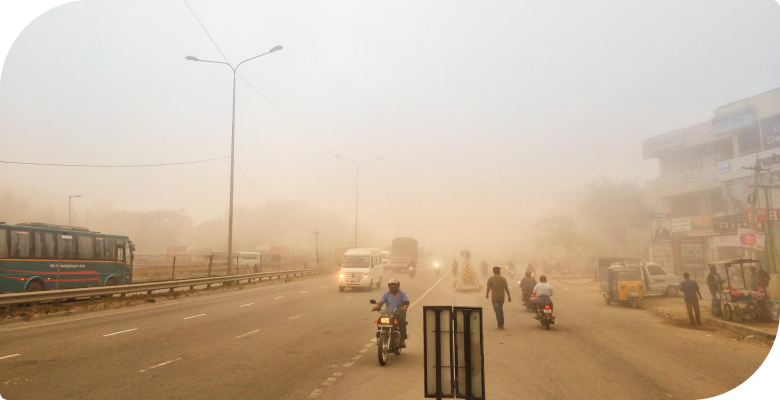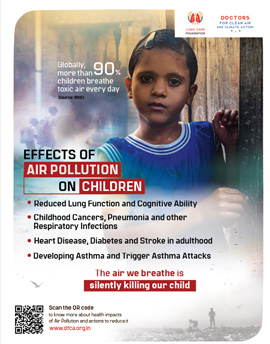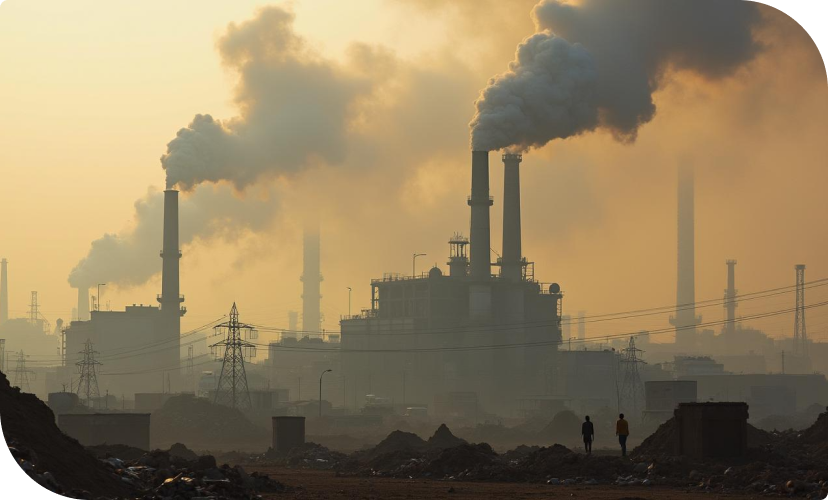Understanding Air Pollution
What is Air Pollution
Types of Pollutants
- PM 10
- PM 2.5
- PM 1

- Sulphur Dioxide (SO2)
- Nitrogen Oxides (NOx) – include Nitric Oxide [NO] and Nitrogen Dioxide [NO2]
- Ozone
- Carbon Monoxide (CO)
- Carbon Dioxide (CO2)
- Volatile Organic Compounds (vocs)
- Lead
- Mercury
- Zinc
- Chromium
- Cobalt
- Cadmium
Understanding the Types of Pollutions


Common Outdoor Air Pollutants:
- PM10: Particles with 1o micron diameter. Majorly contains dust particles which can pass through nose, throat & enter lungs.
- PM2.5: Smoking and second-hand tobacco contributes to indoor air pollution and it also raises risk for cancer and heart attacks
- Sulphur Dioxide (SO2): This gas is colourless and has strong odour. It is formed from the burning of coal, petrol, diesel, etc.
- Nitrogen Oxide (NO2): It is formed by burning of coal, petrol, diesel and natural gas. NOx combines with SO2 to form acid rain.
- Carbon Monoxide (CO): It is produced during incomplete burning of coal, petrol, diesel, wood & natural gas.
- Ozone (O3): Ground level ozone is harmful to our health. It is emitted by cars, chemical plants & power plants, etc.
- Volatile Organic Compounds (VOCs): VOCs are produced from burning of petrol, diesel and coal. VOCs are also released from glues, dry cleaning products, etc.
Common Outdoor Air Pollutants:
- Particulate matter: Biggest contributor is outside air. Other indoor sources may include heaters, Chulhas, burning of wood, etc.
- Tobacco: Smoking and second-hand tobacco contributes to indoor air pollution and it also raises risk for cancer and heart attacks
- Chulhas: Smoke from burning wood, cow-dung and crop waste for cooking is very harmful as it leads to respiratory diseases and lung infections.
- Dust: Fine particles of Dust can enter our nose, throat and lungs which can be harmful for our health. Dust also acts as a carrier for bacteria and viruses
Air Quality Index
The Air Quality Index (AQI) simplifies complex air pollution data into an easy-to-understand number, colour code, and health risk information. As AQI rises (worse air quality), health risks, especially for vulnerable populations, increase. Six AQI categories, each with a colour, inform the public about air quality and encourage action towards cleaner air. AQI levels directly correlate with the extent of damage to health and well-being.
A Comparison of WHO and Indian Air Quality Standards:
AQI levels and Health Effects
Know your Air Quality in your City
The Toll of Air Pollution on Health
Air pollution is a major environmental health risk, affecting individuals across all demographics. It has both immediate and long-term affects on health, contributing to a variety of diseases and conditions. The severity of these impacts depends on the type of pollutants, duration of exposure. and individual susceptibility.
Key Stats
Our Resources







